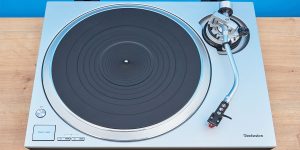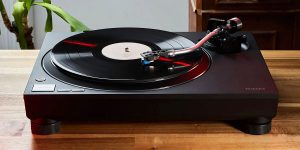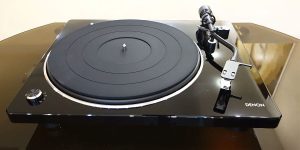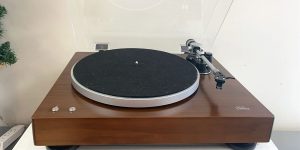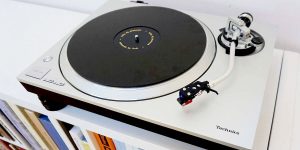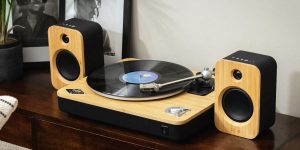When it comes to turntables, there’s an ongoing debate that has captured the attention of music enthusiasts and audiophiles alike: belt-drive vs. direct-drive turntable. These two technologies represent distinct approaches to the mechanics of a record player, and each has its own unique set of advantages and disadvantages.
In this article, I will cover the pros and cons of belt-drive and direct-drive turntables, shedding light on their differences and helping you make an informed decision when choosing the perfect vinyl player for your musical journey.
Exploring belt-drive turntables

Belt-driven turntables are a preferred option among vinyl enthusiasts due to their unique design. These record players use a belt to connect the motor and platter, reducing vibration and improving sound quality. Belt-driven turntables have unique features that make them a popular choice among vinyl enthusiasts. Let’s explore the pros and cons of this vinyl player type.
Pros
- Reduced vibration and better sound quality. Belt-driven turntables excel at minimizing vibration. Due to their design, they can effectively isolate the platter from motor-induced vibrations, offering a more immersive listening experience.
- Easy maintenance and replacement. Maintaining a belt-driven vinyl player is relatively simple. The belt can be easily replaced when necessary, ensuring consistent performance. Routine maintenance involves checking the belt’s tension and condition, which can be done without much hassle.
- Affordable options available. Belt-driven vinyl players are often more budget-friendly compared to their direct-drive counterparts. They provide an accessible entry point for vinyl enthusiasts or those with tighter budgets, allowing them to enjoy the analog experience without a significant financial investment.
Cons
- Slower start-up and speed adjustment. A trade-off of belt-driven turntables is their slightly slower start-up time compared to direct-drive models. The belt requires a moment to engage and spin the platter, resulting in a brief delay before the music begins. Similarly, adjusting the playback speed can take a bit more time due to the nature of the system.
- Belt wear and eventual replacement. Over time, the turntable drive belt may experience wear and tear. However, with proper care and periodic belt replacements, this issue can be effectively managed.
- Less suited for DJing and scratching. Belt-driven record players are generally not the ideal choice for DJing or scratching purposes. The slower start-up time and less precise speed control can pose challenges for DJs who require quick and accurate playback adjustments.
Belt-driven vinyl players truly shine in providing a captivating and immersive listening experience, thanks to their remarkable capability to minimize undesirable background noise and distortion. However, it’s important to note that belt-driven turntables may not be the optimal option for DJs or individuals seeking to engage in scratching, as their speed control capabilities are somewhat limited.
Exploring direct-drive turntables
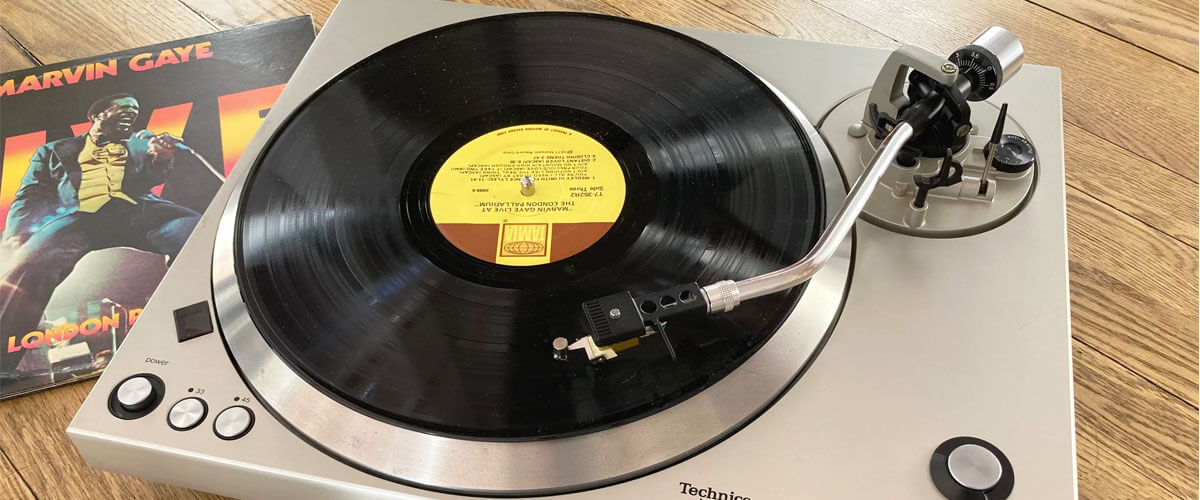
Direct-drive turntables are a type of vinyl record player that directly connects the motor to the platter. Unlike belt-driven turntables, there is no belt involved in the power transmission. Instead, the motor is situated directly under the platter and spins it at the desired speed.
Direct-drive vinyl players are known for their durability and stability. The direct transmission of power results in a more robust and reliable performance, making them well-suited for professional use and DJing.
Let’s delve into the characteristics of this record player type and examine the pros and cons it provides.
Pros
- Swift start-up and precise speed control. Direct-drive turntables excel in quick start-up times, allowing you to enjoy your vinyl collection without delay. With a direct motor connection, they offer accurate speed control, ensuring faithful playback and maintaining the intended rhythm of the music.
- Enhanced durability and stability. By eliminating the need for belts, they provide a robust construction that minimizes speed fluctuations, delivering consistent and reliable audio performance.
- Ideal for DJing and professional use. Direct-drive turntables are highly regarded in the DJing and professional audio community. Their high torque motors offer the necessary power and responsiveness for dynamic scratching, precise beatmatching, and seamless live performances.
Cons
- Potential for increased vibration and noise. Direct-drive turntables may introduce some motor-induced vibrations and noise due to the direct motor-to-platter connection. However, manufacturers employ advanced damping and isolation technologies to minimize these effects.
- Higher price range. These record players generally come with a higher price tag compared to belt-drive models. This higher cost is attributed to the advanced engineering and components involved.
- Maintenance and repairs may require expertise. Such vinyl players may require more specialized maintenance and repairs. The internal components, including the motor and drive system, may need occasional servicing.
So, when choosing between direct drive or belt drive record players, it’s essential to consider your specific needs. While they may exhibit some vibration and noise potential and come at a higher price range, direct-drive vinyl players’ overall performance and reliability make them a popular choice for vinyl enthusiasts.
Choosing the ideal turntable for your needs
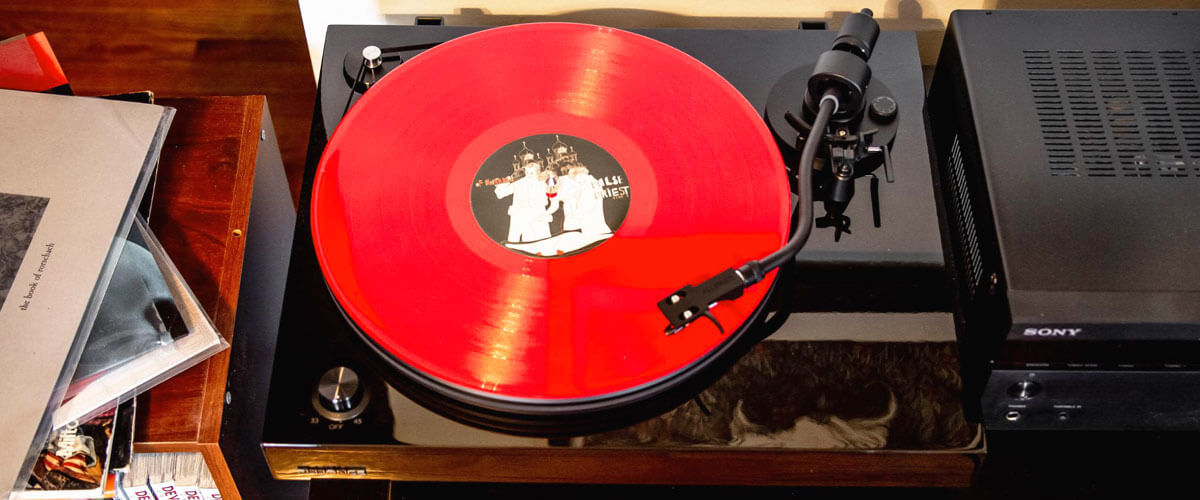
Selecting the perfect record player requires careful consideration of your specific requirements. Now, it’s time to explore some key factors to help you make a well-informed decision.
Assessing your needs and intended use
If you’re a vinyl enthusiast looking to enjoy your records in the comfort of your home, a belt-drive record player is a popular choice. These turntables strike a balance between affordability and sound quality, making them ideal for casual listening sessions and immersing yourself in the analog music experience.
If you aspire to become a DJ or require a turntable for professional purposes, a direct-drive turntable is the way to go. These turntables offer features like faster start-up times, precise speed control, and enhanced durability, making them suitable for scratching, mixing, and delivering optimal performance in DJ sets.
Evaluating your budget
Consider your budget when making a record player decision. Belt-drive turntables are generally more budget-friendly, providing an entry point for vinyl enthusiasts without breaking the bank.
Direct-drive models often come with a higher price tag due to their advanced features and construction quality. It’s important to consider the initial cost and long-term maintenance expenses to align your choice with your budgetary constraints.
Prioritizing sound quality and performance
The drive system of a turntable significantly influences sound quality:
- Belt-drive record players excel in reducing vibrations, resulting in enhanced audio quality, reduced background noise, and a more immersive listening experience.
- Direct-drive turntables, with their precise speed control and stability, are favored for their ability to deliver pitch-perfect playback, making them suitable for professional use and DJ performances.
Additionally, factors like turntable design, component quality, and vibration isolation should be considered to optimize sound quality.
Considering durability and maintenance requirements
Maintenance and durability are essential considerations. Belt-drive vinyl players generally require periodic belt replacements to maintain optimal performance, but their maintenance procedures are relatively straightforward.
Direct-drive record players can be more complex to repair if issues arise. It’s important to assess your willingness to perform maintenance tasks or seek professional assistance based on your comfort level and technical skills.
In conclusion, selecting the right turntable involves evaluating your needs, budget, sound quality preferences, and maintenance requirements. Understanding the differences between belt-drive and direct-drive turntables will guide you toward a choice that suits your preferences and ensures an enjoyable vinyl listening experience.
We are supported by our audience. When you purchase through links on our site, we may earn an affiliate commission at no extra cost to you.
Our newsletter
* We will never send you spam or share your email with third parties


